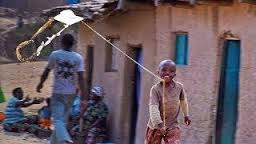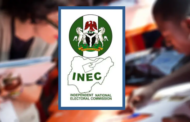In an effort to combat chronic malnutrition, the government of Niger, in collaboration with the World Bank and UNICEF, has established a social safety net program targeting women
Beneficiaries receive a cash transfer of CFAF 10,000 (approximately US$20) per month for two years
In addition to the cash transfers, the women and their communities benefit from accompanying measures that encourage them to invest in their children from a young age
KATAMI, November 5, 2013 – Malnutrition is a torment that Rabi, a Nigerien mother, struggles with daily. Rabi lives in the village of Katami, in the southern Niger department of Dosso, one of the poorest regions in the country. About 20 years old, Rabi raises her five children, as well as an orphaned niece, by herself. Her husband left the village five years ago in search of a better life, leaving the young woman to feed the household on her own.
In Niger, an immense Sahelian country where the fertility rate (7.6 children per woman) is among the highest in the world and where drought strikes with alarming frequency, more than one-third of children under five years of age are underweight. And even when the harvest is good, an estimated 40 percent to 50 percent of Nigeriens struggle to feed their families.
In an effort to combat this misery, Nigerien authorities decided to tackle the causes of chronic food insecurity. In 2011, with support from the World Bank, the government began to establish a system of social safety nets targeting the most vulnerable households, and women in particular, in the five poorest regions in the country: Maradi, Tahoua, Tillabery, Zinder and Dosso.
Rabi is among 114 beneficiaries in the village of Katami alone. For almost a year she has been receiving monthly cash transfers of CFAF 10,000 (approximately US$20), which she will continue to collect for 24 consecutive months. “I use this money to buy food and clothes, but also soap and shoes for the children,” Rabi states.
“What’s new in the social safety net program is that we’re not content to just give out money to beneficiaries; this program includes measures meant to bring about behavioral changes, not only among beneficiaries, but also across the community,” notes Carlo del Ninno, a World Bank economist and task team leader. “It is about long-term investment in human capital. The program’s goal is to help the most impoverished households meet their needs, avoid having to sell their assets when crises hit, and improve the odds that the children will emerge from poverty in the future,” he adds.
What’s new in the social safety net program is that we’re not content to just give out money to beneficiaries; this program includes measures meant to bring about behavioral changes, not only among beneficiaries, but also across the community














